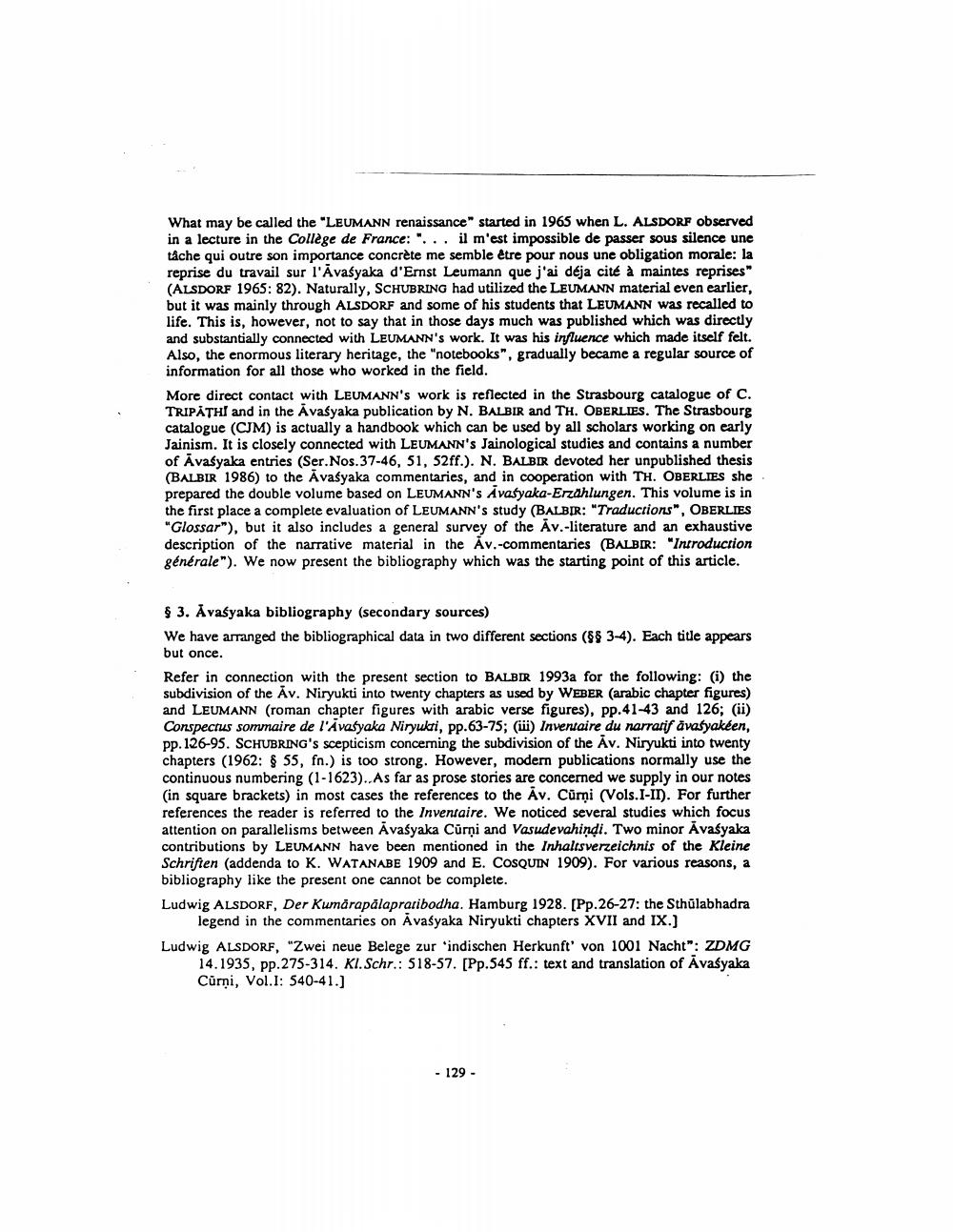________________
What may be called the "LEUMANN renaissance started in 1965 when L. ALSDORF observed in a lecture in the Collège de France: "... il m'est impossible de passer sous silence une tâche qui outre son importance concrete me semble être pour nous une obligation morale: la reprise du travail sur l'Āvaśyaka d'Ernst Leumann que j'ai déja cité à maintes reprises" (ALSDORF 1965: 82). Naturally, SCHUBRING had utilized the LEUMANN material even earlier, but it was mainly through ALSDORF and some of his students that LEUMANN was recalled to life. This is, however, not to say that in those days much was published which was directly and substantially connected with LEUMANN's work. It was his influence which made itself felt. Also, the enormous literary heritage, the "notebooks", gradually became a regular source of information for all those who worked in the field. More direct contact with LEUMANN's work is reflected in the Strasbourg catalogue of C. TRIPATHI and in the Avašyaka publication by N. BALBIR and TH. OBERLIES. The Strasbourg catalogue (CIM) is actually a handbook which can be used by all scholars working on early Jainism. It is closely connected with LEUMANN's Jainological studies and contains a number of Avasyaka entries (Ser. Nos. 37-46, 51, 52ff.). N. BALBIR devoted her unpublished thesis (BALBIR 1986) to the Avasyaka commentaries, and in cooperation with TH. OBERLIES she prepared the double volume based on LEUMANN's Avašyaka-Erzählungen. This volume is in the first place a complete evaluation of LEUMANN's study (BALBIR: "Traductions", OBERLIES "Glossar"), but it also includes a general survey of the Av.-literature and an exhaustive description of the narrative material in the Av.-commentaries (BALBIR: "Introduction générale"). We now present the bibliography which was the starting point of this article.
$ 3. Avasyaka bibliography (secondary sources) We have arranged the bibliographical data in two different sections (88 3-4). Each title appears but once. Refer in connection with the present section to BALBIR 1993a for the following: (i) the subdivision of the Āv. Niryukti into twenty chapters as used by WEBER (arabic chapter figures) and LEUMANN (roman chapter figures with arabic verse figures), pp. 41-43 and 126; (ii) Conspectus sommaire de l'Avasyaka Niryukti, pp. 63-75; (ii) Inventaire du narratif avasyakéen, pp. 126-95. SCHUBRING's scepticism concerning the subdivision of the Av. Niryukti into twenty chapters (1962: $ 55, fn.) is too strong. However, modern publications normally use the continuous numbering (1-1623). As far as prose stories are concerned we supply in our notes (in square brackets) in most cases the references to the Av. Cūrņi (Vols.I-II). For further references the reader is referred to the Inventaire. We noticed several studies which focus attention on parallelisms between Avaśyaka Cūrņi and Vasudevahindi. Two minor Avaśyaka contributions by LEUMANN have been mentioned in the Inhaltsverzeichnis of the Kleine Schriften (addenda to K. WATANABE 1909 and E. COSQUIN 1909). For various reasons, a bibliography like the present one cannot be complete. Ludwig ALSDORF, Der Kumarapalapraribodha. Hamburg 1928. [Pp. 26-27: the Sthūlabhadra
legend in the commentaries on Avašyaka Niryukti chapters XVII and IX.) Ludwig ALSDORF, "Zwei neue Belege zur 'indischen Herkunft von 1001 Nacht": ZDMG
14.1935, pp.275-314. KI. Schr.: 518-57. [Pp.545 ff.: text and translation of Āvaśyaka Cúrni, Vol.l: 540-41.)
- 129 -




